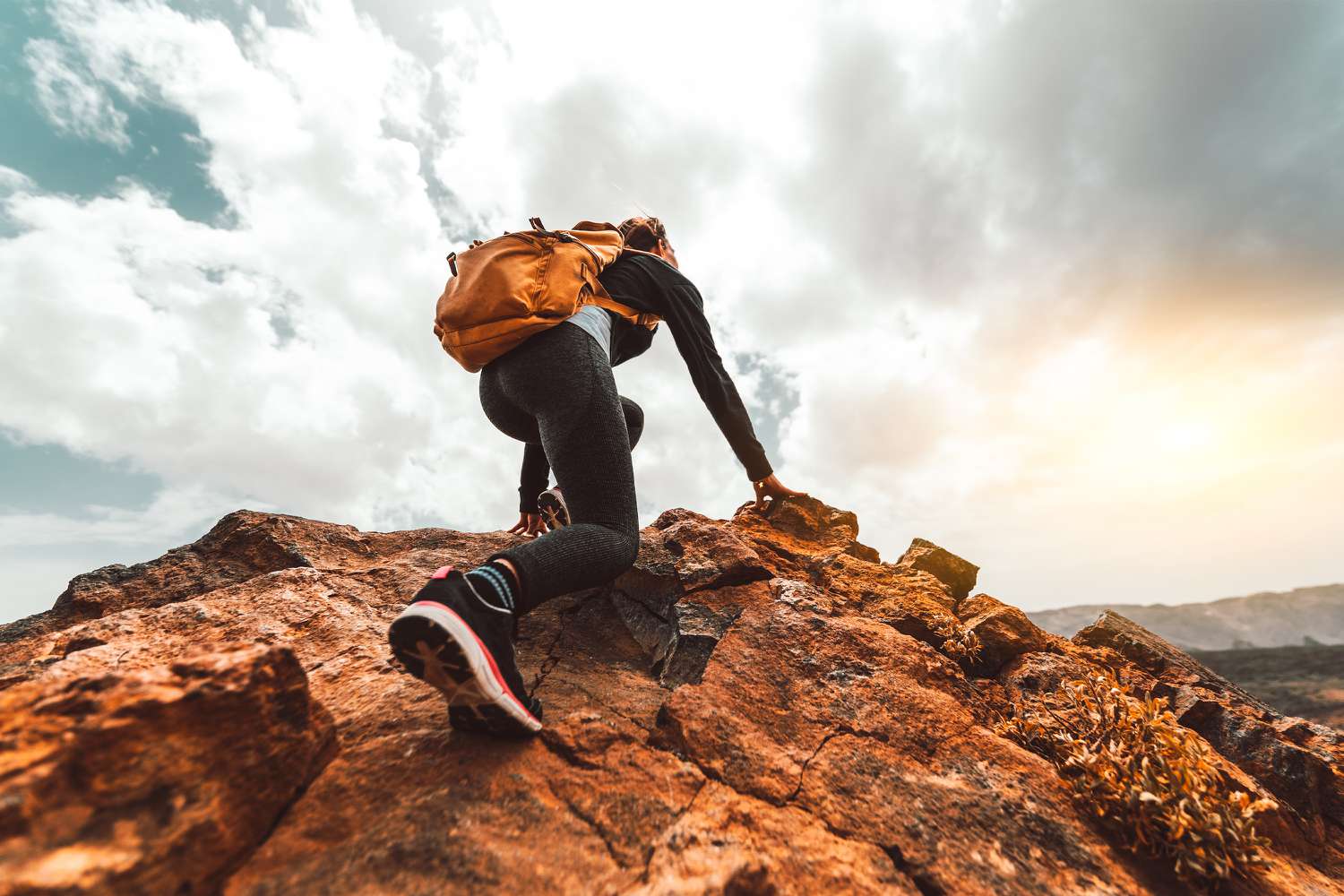To get in shape for hiking, focus on cardio, strength training, and flexibility exercises for a holistic approach. Engage in activities such as running, cycling, weightlifting, and yoga to prepare your body for the demands of hiking.
Enhancing your endurance, strength, and flexibility will help you tackle different terrains and elevations, ensuring an enjoyable and successful hiking experience. A well-rounded fitness routine tailored to hiking-specific needs will not only improve your overall physical health but also boost your confidence and enjoyment in the great outdoors.
By prioritizing fitness and taking the necessary steps to prepare, you’ll be well-equipped for any hiking adventure that comes your way, ready to conquer new challenges and create lasting memories.


Credit: www.lonelyplanet.com
Choosing The Right Training Plan
When it comes to preparing for a challenging hiking trip, choosing the right training plan is crucial for success. Here we focus on Assessing Your Fitness Level and Setting Realistic Goals.
Assessing Your Fitness Level
Start by evaluating your current fitness level to tailor your training plan accordingly.
- Assess your endurance, strength, and flexibility capabilities.
- Consider any previous hiking experience and physical limitations.
- Consult a fitness professional if needed.
Setting Realistic Goals
Establish achievable objectives based on your fitness assessment.
- Define specific milestones such as distance or elevation targets.
- Gradually increase intensity and duration in your training.
- Monitor progress and adjust goals as needed.

Credit: www.shedreamsofalpine.com
Strengthening Your Lower Body
When preparing for hiking, strengthening your lower body is crucial for endurance and stability on the trails.
Exercises For Quadriceps And Hamstrings
Quadriceps:
- 1. Squats
- 2. Lunges
- 3. Leg press
Hamstrings:
- 1. Deadlifts
- 2. Leg curls
- 3. Romanian deadlifts
Improving Ankle Stability
Ankle-strengthening exercises:
- 1. Calf raises
- 2. Ankle circles
- 3. Balancing on one leg
Building Endurance And Cardiovascular Fitness
Building endurance and cardiovascular fitness plays a crucial role in preparing for hiking. Strong endurance and cardiovascular fitness not only improve your stamina but also help you tackle challenging terrains, high altitudes, and long distances more effectively.
Incorporating Hiit Workouts
HIIT, or High-Intensity Interval Training, involves short bursts of intense exercise followed by brief periods of rest. This training method helps boost your cardiovascular endurance and build muscle strength. Consider incorporating HIIT workouts into your training routine to improve your overall fitness levels and prepare for the demands of hiking.
Long-distance Hiking Prep
Incorporating long-distance hiking into your training regimen is essential for building the endurance required for extended treks. Gradually increase the length and difficulty of your hikes to simulate the conditions you’ll encounter on longer trails. This will help condition your body and mind for the physical and mental challenges of sustained hiking over varied terrain.
:max_bytes(150000):strip_icc()/061623-Hiking-Boots-0f5aa3b6cfb645e8a018f12c6708629d.jpg)
Credit: www.shape.com
Balancing Your Core And Upper Body Strength
To prepare for hiking, it’s essential to focus on developing both upper body and core strength. This will help in maintaining balance and stability while navigating various terrains. Including exercises like planks, push-ups, and overhead presses in your workout routine can help you build the necessary strength for a successful hike.
Core Strengthening Exercises
To excel at hiking, you need a strong and stable core. This section will focus on core strengthening exercises that will help you maintain balance, stability, and power during your hikes. 1. Planking: A simple yet effective exercise, planking strengthens your core by engaging your abdominal muscles and lower back. Start by getting into a push-up position, with your weight on your forearms and toes. Hold this position for as long as you can, keeping your body in a straight line. Repeat for several sets. 2. Russian Twists: Russian twists target your obliques and improve rotational stability. Sit on the ground with your knees bent and feet flat. Lean back slightly, keeping your back straight, and lift your feet off the ground. Hold your hands together and twist your torso from side to side, tapping the ground on each side. Repeat for multiple sets. 3. Bicycle Crunches: Bicycle crunches engage your entire core, including your upper and lower abs. Lie flat on your back with your knees bent and feet lifted. Place your hands behind your head and alternately bring your right elbow towards your left knee, then your left elbow towards your right knee, in a cycling motion. Repeat for multiple sets.Upper Body Training For Carrying Loads
Carrying a backpack and navigating rough terrains can put a strain on your upper body. Building strength in your upper body will make it easier to carry loads and reduce the risk of injuries. Here are some exercises to help you develop upper body strength: 1. Push-ups: Push-ups target your chest, shoulders, and triceps, helping to improve overall upper body strength. Start in a plank position with your hands slightly wider than shoulder-width apart. Lower your body by bending your elbows, then push back up to the starting position. Repeat for multiple sets. 2. Overhead Press: The overhead press works your shoulders, upper back, and core. Stand with your feet shoulder-width apart, holding dumbbells or a barbell at shoulder height. Press the weights overhead until your arms are fully extended, then lower them back down. Repeat for multiple sets. 3. Bent-Over Rows: Bent-over rows target your back, shoulders, and arms. Stand with your feet hip-width apart, holding a dumbbell in each hand. Bend forward at the hips, keeping your back straight, and let the weights hang. Pull the weights up towards your chest, squeezing your shoulder blades together, then lower them back down. Repeat for multiple sets. By incorporating these core strengthening exercises and upper body training into your fitness routine, you’ll develop the strength and stability needed to tackle challenging hikes with ease. Remember to start at a comfortable level and gradually increase the intensity and frequency of your workouts for optimal results. Happy hiking!Flexibility And Mobility Training
Enhance your hiking performance with targeted flexibility and mobility training. Boost stamina and prevent injuries while prepping for your ultimate hiking adventure.
Flexibility and mobility training play a crucial role in getting in shape for hiking. Strengthening your muscles and building endurance is important, but without proper flexibility and mobility, you may find yourself struggling on the trails. In this section, we will explore stretching exercises for hiking performance and mobility exercises for range of motion.
Stretching For Hiking Performance
Stretching is an essential component of any hiking training regimen. It helps to improve flexibility, increase blood flow to the muscles, and prevent injuries. By incorporating stretching exercises into your routine, you can enhance your hiking performance and make your time on the trails more enjoyable.
- Hamstring Stretch: Stand with your feet shoulder-width apart and extend one leg forward, resting your heel on a step or raised surface. Keeping your back straight, lean forward from your hips until you feel a stretch in the back of your thigh. Hold the stretch for 15-30 seconds and then switch sides.
- Quad Stretch: Stand tall and bend one knee, bringing your heel towards your glutes. Grasp your ankle with the corresponding hand and gently pull your foot towards your glutes until you feel a stretch in the front of your thigh. Hold the stretch for 15-30 seconds and then switch sides.
- Calf Stretch: Stand facing a wall and place your hands on the wall at shoulder height. Step one foot back and keep it in a straight line with your hips. Lean forward, keeping your back leg straight, until you feel a stretch in your calf muscle. Hold the stretch for 15-30 seconds and then switch sides.
Mobility Exercises For Range Of Motion
Mobility exercises help to improve your range of motion, allowing you to move more freely and efficiently on the hiking trails. These exercises target specific muscle groups and joints, enhancing your overall mobility and helping to prevent injuries caused by restricted movement.
- Shoulder Rotations: Stand with your feet shoulder-width apart and extend your arms out to the sides. Slowly rotate your arms in small circles forward for 15-30 seconds, then switch to backward circles for the same duration.
- Hip Circles: Stand with your feet hip-width apart and place your hands on your hips. Gently make circular movements with your hips, clockwise and then counterclockwise, for 15-30 seconds each direction.
- Ankle Circles: Sit on the edge of a chair or bench with one leg extended. Rotate your ankle in a circular motion, first in one direction for 15-30 seconds, then in the opposite direction for the same duration. Repeat on the other leg.
By incorporating these stretching and mobility exercises into your hiking fitness routine, you’ll improve your flexibility and range of motion, allowing you to tackle challenging terrains with ease. Remember to consult with a healthcare professional or a certified trainer to ensure these exercises are suitable for your fitness level and any specific conditions you may have. So, let’s gear up and prepare our bodies for the amazing hiking adventures that await us!
Frequently Asked Questions For Getting In Shape For Hiking The Ultimate Guide
What Are The Benefits Of Hiking For Fitness?
Hiking not only improves your physical fitness but also offers mental benefits. It enhances cardiovascular health, builds strength and endurance, burns calories, reduces stress, and improves mood and cognitive function.
How Can I Prepare My Body For A Hiking Trip?
To prepare your body for a hiking trip, focus on strength training, flexibility, and cardiovascular exercises. Include activities such as walking, jogging, hiking on inclines, lunges, squats, and core exercises. Start slow and gradually increase intensity to avoid injuries.
What Gear Do I Need For Hiking?
Essential gear for hiking includes comfortable hiking shoes, moisture-wicking clothing, a backpack, a map or GPS, a water bottle, sunscreen, a hat, snacks, a first aid kit, and a flashlight. It is important to choose gear appropriate for the terrain and weather conditions.
How Can I Prevent Blisters While Hiking?
To prevent blisters while hiking, wear moisture-wicking socks, properly fitted shoes, and consider using blister prevention products such as moleskin or blister patches. Take breaks to air out your feet and allow them to dry. If you feel discomfort, address it promptly to prevent blisters from forming.
Conclusion
Incorporating these hiking workouts into your routine will help you prepare for challenging terrains. Remember, a strong body and mind are essential for an enjoyable hiking experience. So, lace up your boots, hit the trails, and embrace the rewards of your efforts.
Happy hiking!